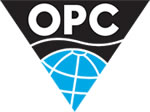
Melbana Energy has provided an operational update regarding Block 9 PSC onshore Cuba, for which it is operator and holds a 30% interest.
Highlights
- Mobilisation commenced for Amistad-11.
- Drilling to begin before the end of the month and complete before year end, subject to formal completion of necessary permits and approvals.
- Amistad-11 to twin Alameda-21, up-dip and using latest well design and formation management techniques developed using previous learnings.
Melbana Energy’s Executive Chairman, Andrew Purcell, commented:
'It will take some time to fully analyse the results of Amistad-2, so we’re moving the rig to be ready to drill a twin of the Alameda-2 production well whilst we secure final approvals. Alameda-2 originally produced at more than 1200 barrels of oil per day, but we damaged the formation shutting it in to drill Alameda-3 and the workover we tried was only partially successful. A new well updip of a known successful producer, incorporating everything we’ve learned about how to manage these formations and complete our wells, gives us high confidence that this can be brought online at an improved rate before the end of the year. The last-minute pivot to a new well has taken some deft footwork, so my sincere thanks to our experienced operations and permitting teams as well as our partners, all of whom have responded proactively to this initiative.'
Amistad-11 Production Well
Melbana and its partners have approved the relocation of the rig to allow the drilling of the next production well in Block 9, to be designated Amistad-11.
Amistad-11 is to be drilled off Pad 1 (see Figure 1 on page 2), immediately adjacent to the Alameda-2 well that has been on production since April 2025. Instructions to mobilise the rig, which has remained nearby on Pad 4 following the completion of Amistad-2 related activities about a week ago, were given over the weekend.
Subject to the timing of receipt of final permits and approvals, it is expected that Amistad-11 should spud before the end of November 2025 and then take a few weeks to drill to total depth. Completion and testing operations would follow before leaving the well on production.
It was previously planned for the next well to be Amistad-3, drilled off Pad 9. It has now been decided to next drill a high confidence well to allow for the results of Amistad-2 to be studied to allow the plans for that well to be tested against any of the resultant learnings.
Amistad-11 Objectives
Amistad-11 is planned to twin Alameda-2 - the Company’s most successful production well to date in Block 9.
Alameda-2 intercepted a known reservoir section (Unit 1B in the upper Amistad sheet) and flowed a significantly lighter (19° API), lower viscosity (30 cP2) oil to surface than is typically recovered in Cuba. The well flowed at a peak rate of 1903 BOPD3 (stabilised average flow rate of 1235 BOPD)4. Given these results, the Company’s independent resource certifier’s gross best estimates (P50) for contingent oil in place in Unit 1B volume is 331 million barrels of oil with a contingent (recoverable) resource of 46 million barrels of oil5,6.
Following the successful appraisal of this discovery, Alameda-2 was shut in to allow the drilling of Alameda-3 nearby off the same pad. Upon reopening Alameda-2 in late 2023 it was discovered that its production rate had dropped to less than 300 BOPD7. Analysis of logs, cores and other data concluded that the fluids used to shut in the well may have damaged the formation near the well bore. A workover program to try and repair this damage was designed using the experience of the Cuban national oil company with similar issues as well as using the results from studies examining the interaction of various fluid types and compositions with formation samples taken from Unit 1B. The workover program successfully increased the production rate to 488 BOPD, but the entire scope of the planned program was unable to be executed due to brine and acid losses to the formation8 . Alameda-2 has remained on production since completion of the workover and had produced more than 36,000 barrels of oil as of 30 September 20259.

Consideration was given to conducting another workover of Alameda-2, or re-entering it and drilling a sidetrack, but when the value risked outcomes of these alternatives were considered alongside a new well incorporating all the fluid management and well design learnings the Company has developed and incorporated into its current operational practices, it is believed a new well provides the highest probability of achieving the desired outcomes.
Amistad-11 Well Design
The plan for Amistad-11 is to drill an up-dip twin of Alameda-2 that kicks off at a shallower depth to achieve the desired separation at optimum reservoir depth then to drill on to a total depth of 1000 m.MD in the lower section of Unit 1B (see Figure 2). The well is planned to have an open hole completion, but with the capability of running a slotted production liner, if required. The reservoir drilling fluid Melbana has developed in response to its experience managing this formation previously will once again be used, given the good drilling rate of penetration and high productivity completion observed at Amistad-2. Drainage interference from the selected well position and trajectory is also estimated to be minimal, given the small volume produced to date relative to likely total recoverable volume estimated from prior testing and location outside the communication area of Alameda-2.
Source: Melbana Energy











